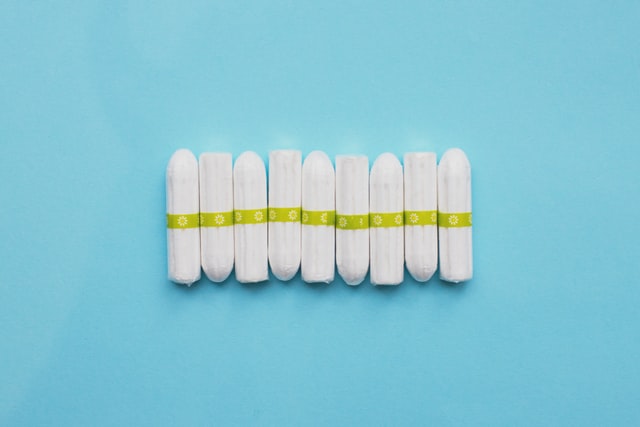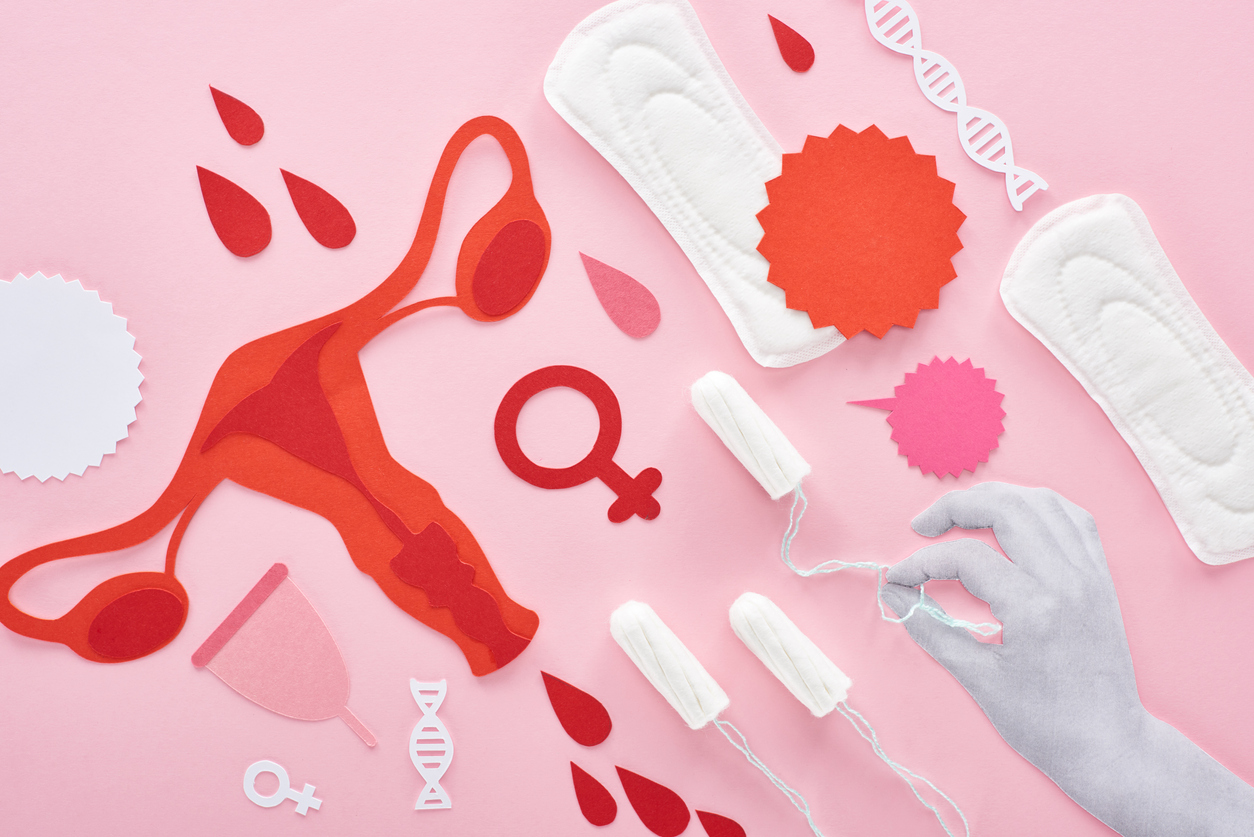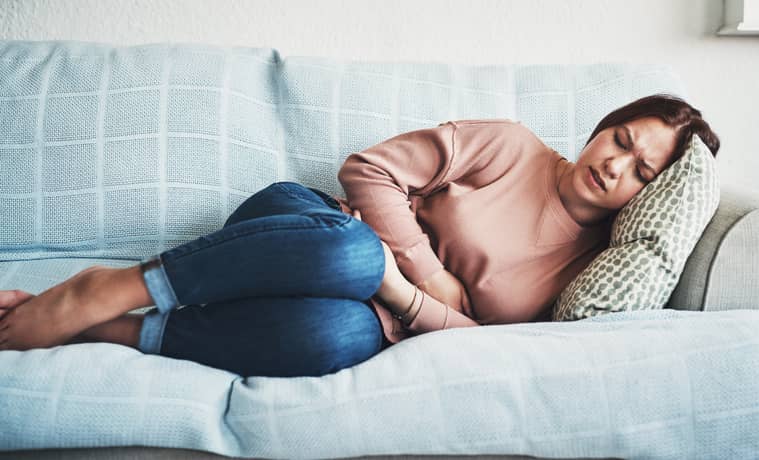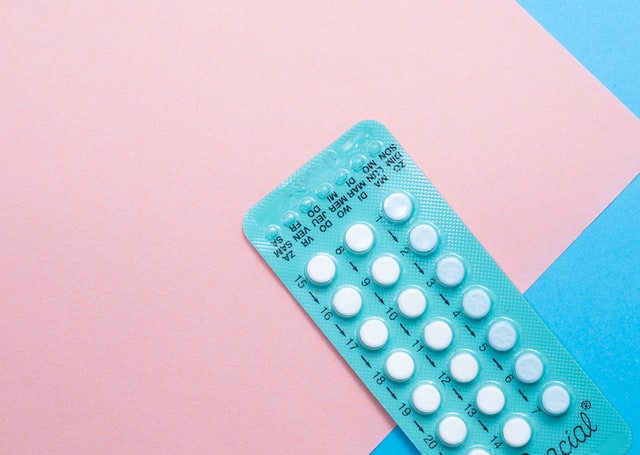If you’ve been using the same tampons or pads for years, it might be time to change things up and see if you can find period products that better suit your needs.
After all, you’ll spend around 7 years of your life on your period, and your flow is likely to change at certain times. Many women get heavier or lighter periods in the run-up to the menopause, for example. Stress and some health conditions – such as polycystic ovary syndrome (PCOS) – can also affect your periods, meaning you may want to rethink the products you use.
The good news is that there’s never been a wider range to choose from, including reusable and eco-friendly period products. Sanitary pads and tampons now come in innovative, comfortable designs, and there are plastic-free and biodegradable options. Or perhaps you want to try a reusable menstrual cup or period pants?
You may find that different products suit you better for certain times of day, points in your period or activities, and you can mix and match what you use. So read on to find the right products for you, your life stage – and the environment.
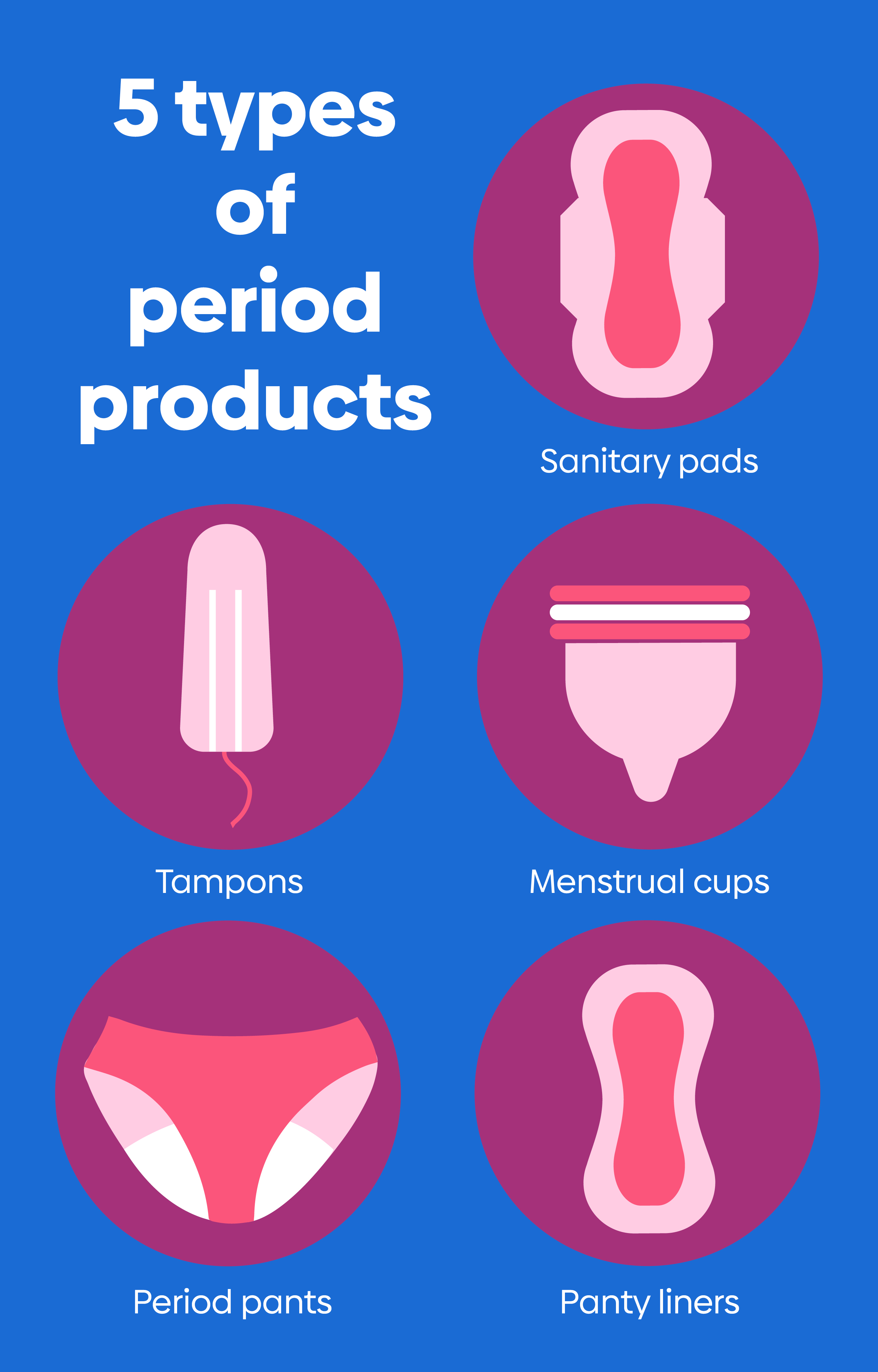
Sanitary pads: great for beginners and at night
Sanitary pads – also called towels – are strips of absorbent material you put in your underwear to soak up the blood of your period. They come in a wide range of absorbencies, for light to very heavy flows.
As well as disposable pads, a growing number of reusable, washable pads are available. They attach to your pants with an adhesive strip, sometimes with ‘wings’ at the sides, or clips or poppers.
Pros:
- many people find them easy to use, particularly when first starting periods
- you don’t have to insert them into your vagina
- you can sleep in them – and more absorbent night-time options are available
- some disposable pads are now plastic-free and biodegradable, and a few can even be flushed down the toilet
- reusable pads can be washed and used many times
Cons:
- if the absorbency doesn’t match your flow or you don’t change them often enough, you can get leaks
- some types may feel bulky or uncomfortable, or be visible under some types of clothing
- you can’t wear them for swimming
- some types can contain up to 90% plastic, and many are individually wrapped in plastic (but more environmentally-friendly options are available – see above)
Tampons: portable and discreet
Tampons are small, cotton-wool tubes that you insert into your vagina to soak up your blood. They have a string at the bottom, which you pull when you’re ready to remove them.
Some tampons come with an applicator to help you insert them, while with others you just use your fingers. If a tampon is correctly in place, it won’t feel uncomfortable – if it does, you may need to reposition it, or try again with a fresh tampon.
You should change your tampon at least every 4 to 8 hours, and never leave it for longer than 8 hours. Always use the lowest absorbency needed for your flow, too.
You can also buy reusable cotton tampons. But there are concerns about their safety, as they may carry a higher risk of infection, and they’re not currently recommended.
Pros:
- they’re small and easy to carry in a pocket or purse
- they offer reliable discreet protection – you don’t have to worry about them being visible
- they’re suitable for use when swimming and doing energetic sports
- they can be worn at the same time as a pad or panty liner (see below), for extra protection if your flow is heavy
- reusable applicators can help cut the amount of plastic in the products you use (but have to be cleaned carefully to make sure they don’t carry a risk of infection)
- there are plastic-free options with cardboard applicators and compostable wrapping
Cons:
- it can take time to learn how to insert them correctly, and you may find this uncomfortable at first
- they’re not suitable to wear at night if you sleep for more than 8 hours
- they’re associated with a rare but serious condition called toxic shock syndrome (TSS), particularly if you leave them in for longer than recommended (read more about this below)
- they can have a similar environmental impact to pads, and many types contain plastic applicators and packaging

Menstrual cups: reusable and eco-friendly
Menstrual cups aren’t new – the idea has been around for more than 100 years – but in recent times the designs have improved and they’ve become more widely available. These days, they’re made of flexible, user-friendly silicone or rubber, and come in different sizes.
Like tampons, you insert a menstrual cup into your vagina – but rather than absorbing blood, the cup collects it, and can hold more blood than a tampon. You then remove the cup, empty the blood into the toilet, and reinsert it.
As they’re reusable, cups need to be kept clean. You should follow any instructions that come with your cup, but you usually rinse it in water each time you empty it, then sterilise it after your period has finished – either by boiling it in water or using a sterilising solution.
Read more about menstrual cup safety and hygiene.
Pros:
- they’re reusable and can last for up to 10 years if used correctly
- after the initial cost, you won’t need to buy more products every month
- they come in different sizes and shapes – usually either tulip- or disc-shaped – to help you find a design that suits your body
- they hold more blood than a tampon and can be worn for up to 12 hours, so can be worn overnight
- you can wear them for swimming or exercising
- they have a lower environmental impact than other period products
Cons:
- they can take time to learn how to insert and remove correctly
- you may get leaks or spills while you get used to them (you could use a pad as well to start with)
- you may feel awkward rinsing your cup in public or shared toilets
- as with tampons, there’s a small risk of TSS – but this is very unlikely if you practise good hygiene
- they may cause discomfort – if you use the wrong size, or you don’t use lubrication when you insert them. It can also take a few months to get used to them
- rarely, they can cause allergic reactions – if you’re allergic to silicone, for example
Period pants: long-wearing and washable
A more recent concept, period pants can be worn and washed like normal pants, but are made of absorbent, leak-proof fabric to trap your blood.
They come in several styles – from big pants to bikini briefs – at various price points. Like other period products, some are designed for lighter flow days while others are super-absorbent for heavier flows.
Pros:
- they’re reusable – a pair can last for a few years if cared for properly
- they can usually go in the washing machine with the rest of your laundry – though you need to rinse them out in cold water first
- after the initial cost they can save you money
- some absorbencies hold more blood than several tampons
- you can safely sleep in them or wear them all day (depending on your flow)
- swimwear pants are also available, with a discreet waterproof layer (though these may only be suitable for lighter flows)
Cons:
- they can be expensive and you may need to buy several pairs, so you can change them when they’re full (they’ll start to feel wet)
- you have to rinse out the blood before putting them in the washing machine
- you may find it awkward if you need to change them in a public or shared toilet
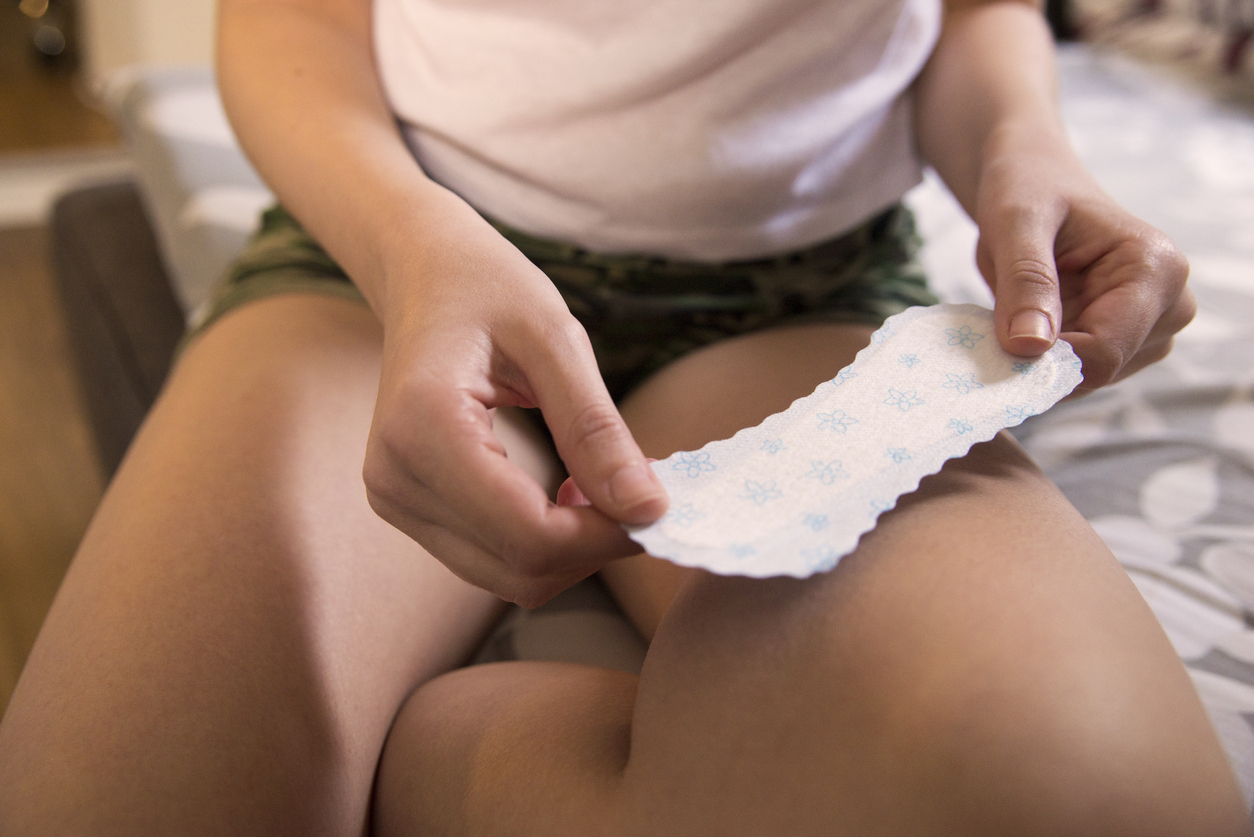
Panty liners: for lighter days
Panty liners are like slimmer, neater and more discreet sanitary pads. They’re better for very light days or when your period is almost over. You can also use them if you want back-up against leaks while wearing a tampon or menstrual cup.
Pros:
- they’re good for very light flows
- they’re less bulky than pads
- they can give added protection when using tampons and menstrual cups
Cons:
- they’re not suitable for heavier flows
- you can’t wear them swimming
- perfumed panty liners may cause irritation
Period products: top tips
- periods are no longer a ‘taboo’ subject, so let’s talk about them – ask your friends and family what they use, or look online for more information about different brands, then experiment with different products until you find what feel rights for you
- whatever products you decide to use, hygiene is important. You should always wash your hands before and after changing period products – especially ones you insert into your vagina – to reduce the risk of spreading germs. Read more about hygiene during your period
- make sure you dispose of period products correctly – most disposable pads and tampons shouldn’t be flushed down the toilet, for example
- got questions about your monthly flow? Read periods: your essential guide to what’s normal and what’s not
Your health questions answered
Do I need to worry about toxic shock syndrome?
“Toxic shock syndrome (TSS) happens when bacteria that normally live on your skin get deeper into your body and release toxins, which can cause damage and stop your organs working. It’s serious and needs immediate treatment (so you should know the symptoms), and it’s associated with using tampons, especially over the recommended times. But it’s rare – and has reduced significantly since certain high-absorbency tampons were withdrawn from sale – so it shouldn’t put you off using tampons. You can also minimise your risk by using period products safely, as below.”
- always wash your hands before inserting a tampon
- use the lowest absorbency tampon for your flow
- change your tampon regularly (at least every 4 to 8 hours)
- switch between using tampons and pads or liners during your period
- only use 1 tampon at a time
- follow good hygiene when using menstrual cups
Can a tampon get stuck inside me?
“A tampon can’t travel further than the top of your vagina – your cervix is too small for it to pass through. However, it’s possible to accidentally push a tampon and its string higher up in your vagina. This can happen if the string doesn’t unfold properly when you insert it, you insert a second tampon by mistake, or you have sex while wearing a tampon. Usually, you’ll be able to find the tampon and gently remove it with your fingers. But if you can’t, you should go to your doctor or a sexual health clinic or emergency department, so they can remove it. It’s essential to remove it, as it could cause smelly discharge or, rarely, toxic shock syndrome.”



